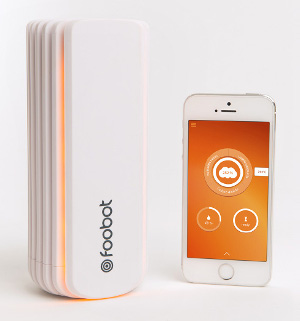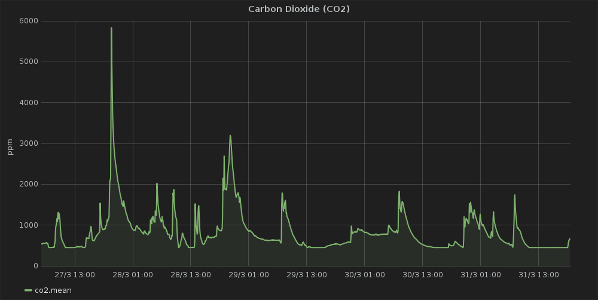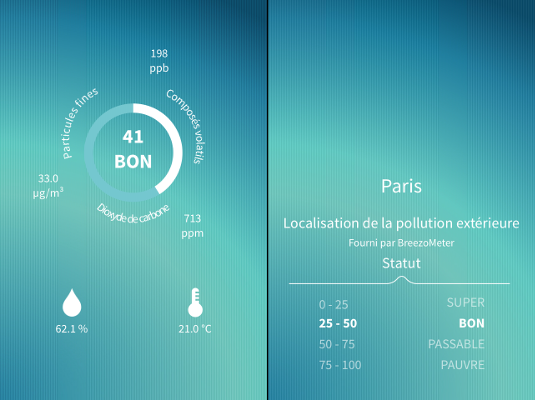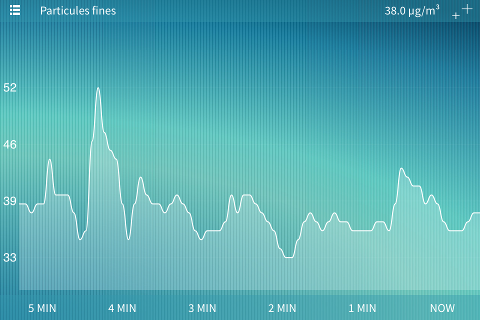Pollution & Sensors
Having started with pollution sensors which turned out to be almost unusable because of the lack of calibration and because I live in Paris which can sometimes have Air Crisis I wanted to carry on with new sensors.
Trouble is, most of them tend to be very expensive or uncalibrated (and sometimes both!).
I was in particular interested in particle sensors (like PPD42NS, PM2.5 laser dust sensor, ...) and CO2 sensors. Each were, at the end of 2015, around $50.
Alima & Foobot
I was aware of the Alima prototype which evolved to become Foobot (honestly how did they come with this crazy name? Sounds really like foobar)
They had a successful campaign on Indiegogo (Indiegogo sounds crazy in French too since gogo means dupe/naive person. That said maybe it is appropriate to crowdfunding after all!).
There are not cheap but they measure (according to the specifications):
- VOC: total Volatile Organic Compounds, including gases such as Formaldehyde, Benzene, Toluene, Ethylene glycol, etc.)
- PM: Particulate Matter (PM2.5)
- CO2: Carbon Dioxide
- CO: Carbon Monoxide
- T: Temperature
- H: Humidity

And once you add the price of all the sensors and components, maybe having a calibrated system with apps and support for $199 is worth it.
Cloud business
The main problem with this kind of gadgets/toys/appliances/things is that they rely on the "Cloud" which mean that they are basically dead the day the company shuts down or decides they want to "refocus". There are countless examples of these, a very famous one being the Nabaztag/Karotz.
There is also the danger of data traveling to US or China without knowledge of what is done with it. At least foobot is based in Europe (Luxembourg) so I assume EU related privacy laws apply.
Openness?
I also discovered that there were some info/code published about their prototype, renamed airboxlab so I would hope that in case of problem the foobot could be updated to talk to a private server.
Installation
With all this in mind, I took the plunge and ordered one. The installation can be done in minutes (as long as you have a phone/tablet on the same Wifi Network and that your Wifi SSID is visible).
At first the application wasn't neither intuive nor reliable. Newest version seem stable and easy to use.
It takes about a week for the Foobot to settle. At first I thought it was busted because all readings were bizarre but after a while they started to make sense.
Notifications
At the begining, I had the notifications on but after a while they become quite annoying and frankly there is not much you can do if the air is not good in the middle of the night! You can also tell the system what the event was but honnestly I don't understand how that works.
Note that you also receive reports by email on a regular basis.
API
There is a API (via the Cloud, unfortunately not a direct connection to the appliance) with historical data. It can be called up to 200 times (odd number even if mathematically even) so I download latest data every 15 minutes (96 times a day).
The API has been pretty stable/reliable so far.
Sensors
The Good?
The sensors "don't like" cooking (or maybe cooking = polluting?). A few month ago, we made some crêpes and the Foobot became all orange (= bad atmosphere). Graphs when to the roof! It is about the same if the oven is turn on.
I assume anything with oil will create loads of "particulate matters"... At least that what the readings say!
The less good
Looking at the component list of the Airboxlab or at the current datasheet, there is something bizarre.
Yes! There is no proper CO2 sensor! The MQ135 is a generic Air Quality Sensor and it is the one used for the Volatile Organic Compounds.
Some people tried to use it to measure CO2 but it looks a bit nonplussing.
And because of this, the graphs for VOC and CO2 have exactly the same shape and it impossible to say if CO2 or Non-CO2 VOC are the ones triggering the sensor :-(
This wasn't clearly advertised when I bought it and this is a bit of a disappointment.

For CO, it is not even returned by the API. That said the Foobot is not an Carbon Monoxide detector and there should not be much CO around in a room so I am OK with that one.
IAQ
Calculated value
Foobot computes an Index which represents the Air Quality (Indoor air quality (IAQ). The lower the better. The colours (shades of blue & orange varies according to this index).
Breezometer
They recently added a outdoor value. Data is computed by Breezometer (how? who knows) and the result is shown on the app. Data is also available directy from Breezometer but there is a small catch:
- Breezometer index via Foobot API is also the lower the better (to keep data consistant)
- Breezometer native index is the higher the better!


Conclusion
First, it works! Seems a bit bizarre said like this but I came across so many dysfunctional stuff that it is worth mentioning that this simple fact.
It measures values which seems in line with my other sensors (Temperature/Humidity) and activities (PM/VOC) even if I can't compare how well calibrated they are.
API is rather stable. The App (IOS/iPhone version but used on an iPad) a bit less depending on releases.
So as I pure sensor, I believe it can be recommended.
I am far more skeptical about the "better air" all the marketing, blog and website seem to be based on. OK knowledge is the be first step towards improvement but I still haven't understood "the magic" about "Predictive data [and] how Foobot learns about your habits and is able to detect pollution peaks before they actually happen".
Apart from opening the window (or stop breething), there is little which can be done in case of pollution alert!